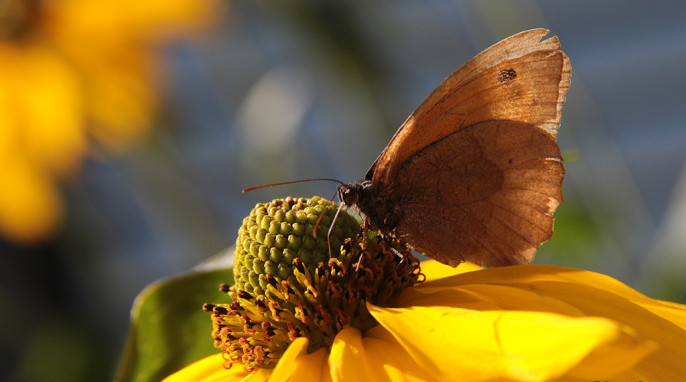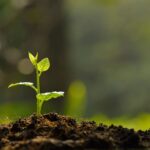Unexpected Biodiversity in Iberian Butterflies
Nature photographer and blogger Steven Spence has good news to share with you about butterflies and biodiversity on the Iberian Peninsula.
Winged Flowers
A fallen blossom
returning to the bough, I thought –
But no, a butterfly.
(Arakida Moritake, Traditional Japanese Poetry: An Anthology)
[落花枝にかへると見れば胡蝶哉 守武
落花枝にかへると見れば胡ちょかな 守武]
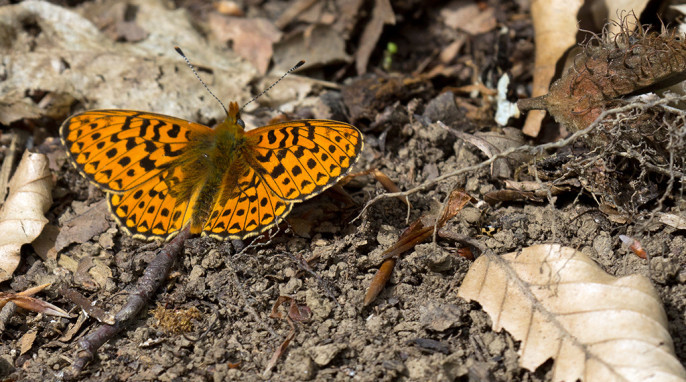

Good News On Biodiversity
This week we have encouraging data to share with you about butterflies in Europe.
Biodiversity is a major concern in Europe and elsewhere. However, a recently released study of butterflies in Spain and Portugal suggests biodiversity may have been significantly underestimated. The study conducted by the Institut de Biologia Evolutiva (IBE) shows that 28% of butterfly species in the sample may be formerly undiscovered.
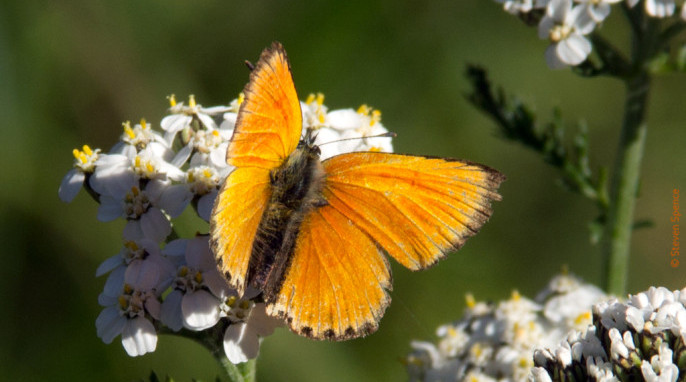

A Bright Spot In A Dark Hour
The study used DNA sequencing to document all 228 known butterfly species on the Iberian peninsula. Scientists discovered that 64 butterfly species may be genetically distinct, but so far unidentified due to close resemblance to other species. Having the DNA sequences gives scientists a tool to definitively identify butterflies, even if only parts of the insect are available, such as when they are eaten by a bird, spider or other predator being studied.
A higher genetic diversity is important for several reasons. For scientists it means that they still have significant work to do to understand the butterflies, their habitats, and life cycles. For the butterflies, a more diverse gene pool promises better adaptability to environment, disease, and predation challenges they may face.
Although increased genetic diversity is very positive, butterflies remain under pressure in Europe and elsewhere. As Robert Vila, the leader of the study explains:
“Similarly to bees, there are figures that clearly demonstrate that butterflies are in a critical situation. In the last twenty years, the butterfly population in Europe has been reduced by half. And this taking into account that twenty years ago the butterfly population had already declined compared to previous decades. We are in a race against time to know and protect their diversity.”
Just The Facts, Jack!
There are currently 482 known species of butterfly in Europe. One third of these butterfly species (142) are found only in Europe. Thirty one (6%) are under conservation status. Overall, 9% of butterfly species have “threatened” status and another 10% are in “near threatened” status.
European butterfly population developments at a glance:
| Population Status | Percentage |
| Increasing | 4 |
| Stable | 50 |
| Declining | 31 |
| Not enough data | 10 |
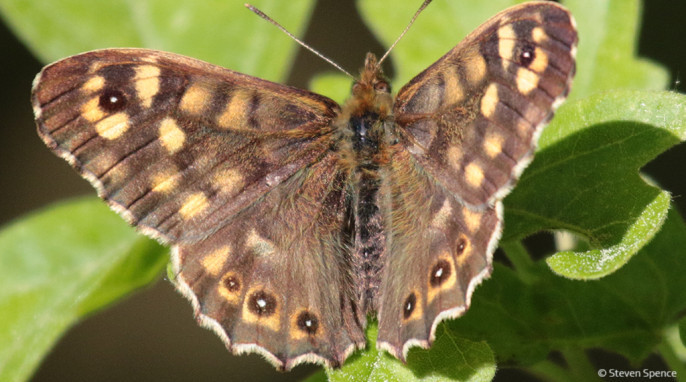

Mainly In Spain
Southern Europe, especially the mountainous regions of the Pyrenees, the Alps, and the Balkans, harbor the greatest diversity of butterflies. Many of these butterflies have restricted ranges making them quite vulnerable to loss of habitat. The Iberian peninsula, where the study was conducted, contains over half (53%) of all the butterfly species in Europe, making it especially important in terms of diversity.
Canary In A Coal Mine?
Why are butterflies in decline? Should we be concerned? Butterflies are environmentally sensitive and their lifecycle (as caterpillars and adults) often depends on very specific plants. They are considered excellent indicators of the status of ecosystems. Yes, if butterflies are on the decline there is every reason to be concerned about the ecosystem in question.
Threats To Butterflies
Butterflies’ sensitivity to specific plants during their lifecycles means that various changes in the environment affecting those plants will be reflected in butterfly populations.
- Climate change: butterflies requiring cooler temperatures may be able to follow vegetation higher in mountainous areas as temperatures warm, but this results in isolated populations. Sometimes the plant and animal life can’t move to higher elevations fast enough and species population pockets are wiped out.
- Agricultural intensification: more mono-cultures, overuse of grasslands, pesticide usage, and even fertilizer usage have significant impact on the availability of plants for butterflies to feed on. Pesticides intended for other species may also kill off caterpillars.
- Loss of Habitat due to development: in addition to vegetation changes related to warming temperatures, ongoing destruction of woodlands and grasslands affects the ranges available to butterflies. If the ranges are no longer connected, the isolated populations become more vulnerable and are at risk of being eradicated.


What Can I Do?
While this article specifically looks at European butterfly populations, the problems described are by no means unique to Europe. Individual efforts can make a difference and certainly reward you with a few more colorful friends dancing on the wind in your neighborhood.
- Support conservation efforts of woodlands and grasslands near where you live.
- Plant native wildflower species where you can. Perhaps you have space in an existing flower bed or can convert part of your lawn to a bed for wildflowers from your area. Consider encouraging your city or county to convert its public spaces. Many US state departments of transportation plant native flowers on highway medians and verges. Due to traffic, however, this is not ideal for butterflies, but it still helps overall. Those same flowers in a safer area away from traffic are excellent microenvironments for butterflies.
- Use pesticides and herbicides with discretion. Targeted use of pesticides and herbicides will reduce the negative environmental impact. Always be careful to ensure that aerial or waterborne applications do not affect areas surrounding the intended treatment site. Consider these natural alternatives, instead.
- Use care with fertilizers. Fertilizers don’t just stay where they are sprayed. Runoff from fertilized fields will cause plants downstream from the field to grow differently. Some plants’ roots may be burned, others may grow much faster and outcompete wild food sources for butterflies.
- Consider participating in citizen science projects with local universities or conservation groups. Often surveys are conducted which you can be part of. Knowing the population of butterflies, plants or insects in a space is the first step in understanding an ecosystem. Regular surveys can give an indication of how the populations change over time and what factors are driving the changes.
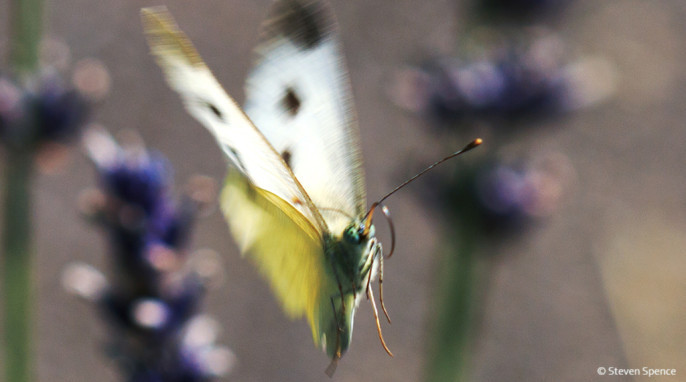

Fluttering Lights
A New Spring (Neuer Frühling)
The butterfly is in love with the rose,
Der Schmetterling ist in die Rose verliebt,
Flutters about her a thousand times,
Umflattert sie tausendmal,
Himself delicate golden
Ihn selber aber, goldig zart,
Surrounded by loving rays of sunshine
Umflattert der liebende Sonnenstrahl.
But who does the rose love?
Jedoch, in wen ist die Rose verliebt?
I would dearly wish to know.
Das wüßt ich gar zu gern.
Is it the singing nightingale?
Ist es die singende Nachtigall?
Is it the silent Evening Star?
Ist es der schweigende Abendstern?
I know not who the rose loves;
Ich weiß nicht, in wen die Rose verliebt;
But I love you all:
Ich aber lieb euch all:
Rose, butterfly, sunshine,
Rose, Schmetterling, Sonnenstrahl,
Evening star, and nightingale.
Abendstern und Nachtigall.
(Heinrich Heine; translation and any errors: Steven Spence)
Resources
DNA Sequencing of Butterflies on the Iberian Peninsula
European Butterfly Biodiversity
European Red List (Butterflies)
Featured photo: A butterfly enjoys refreshment in a garden. Tentative identification: Meadow Brown; German Ochsenauge; Latin Maniola jurtina

